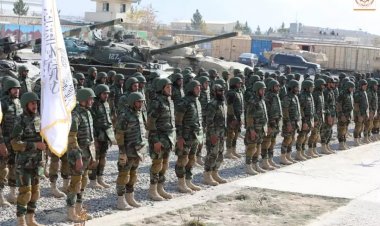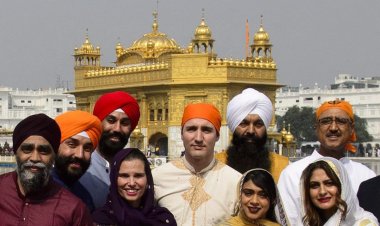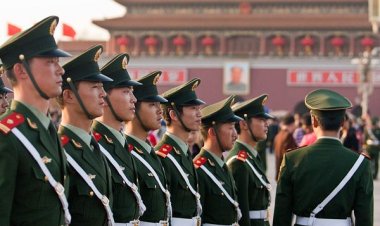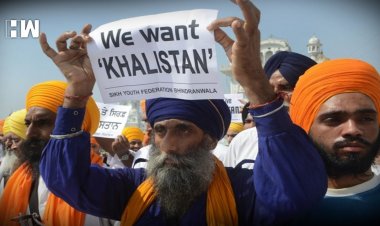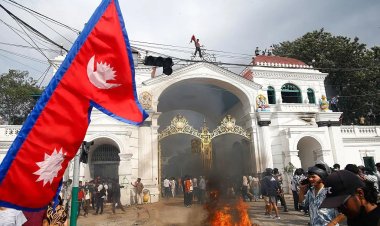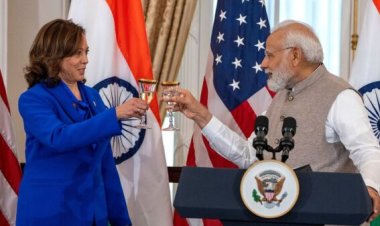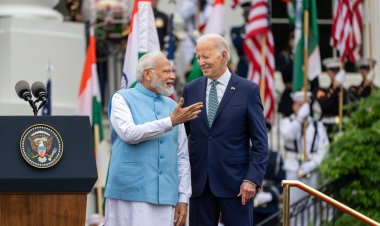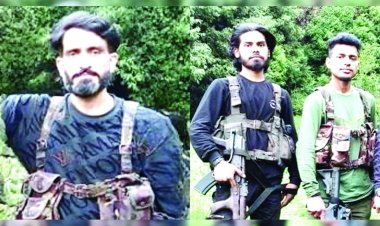No Room for Complacency: India's Vulnerability to Hamas like Terror Attack
The article discusses how India is vulnerable to Hamas-like terror attack and to thwart and prevent it New Delhi needs to put in a humongous effort in intelligence, counter-terrorism, and policing capabilities.
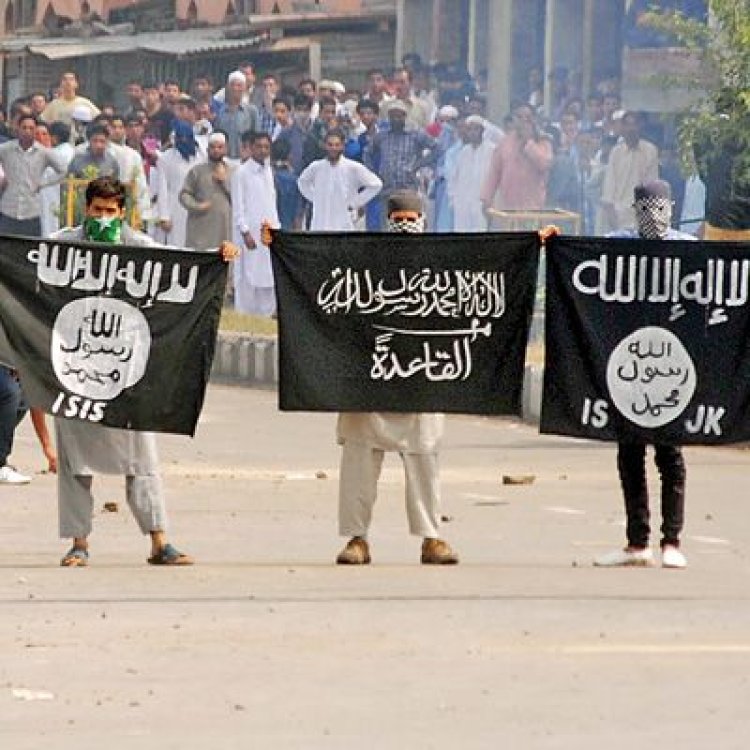
Analysis
By Dr. Abhinav Pandya
After Hamas’ horrendous and barbaric attack on Israel, butchering civilians, several questions arise about their modus operandi, intelligence gathering, preparation, and the intelligence failure of Israel’s mighty security apparatus involving Mossad, Shin Bet, and the IDF. Though the brutal terror attack has taken place in Israel, its repercussions can be felt in India in the form of the massive support shown by some sections of Indian society for the Palestinian cause and the Hamas terrorist attack. Delving deeper into the causal dynamics of this reaction can be the subject matter of a detailed essay tracing its historical roots. However, for now, the situation begets a question: How safe are we, Indians?
Imagine, if one fine morning, we get up to witness hundreds of terrorists flying into the Indian territory on gliders and parachutes or a team of fidayeen go on a shooting spree, killing civilians? In another scenario, what if a bunch of 30 to 40 fidayeen explodes themselves in crowded areas simultaneously in multiple locations or the terrorist groups decide to drop bombs on civilians from the drones? To make the situation worse, what if this is accompanied by massive stone pelting, violent protests, civil unrest, and communal riots in Kashmir and in the Indian hinterland?
Trained foreign terrorists infiltrating into India will act as main coordinators, masterminds, and planners. In this devastation, the disguised sleeper cells will provide timely intelligence. Violent mobs will have the police stations as their first targets from where they will run away with weapons. After the first lethal terror attack followed by communal rioting, by the time the government reacted, thousands of civilians would already have died. Finally, when the state security forces were deployed and took heavy measures including killing the rioters, the well-coordinated global anti-India propaganda war would have put immense pressure on India. Inimical adversaries like China, Turkey, Pakistan, and in this case, the OIC countries and even the left-liberal NGOs, politicians, media houses, journalists, and intellectuals will make huge noise and corner India internationally.
How close are we as a society and country to such a scenario? What is the likelihood of such large-scale terror attacks combined with violent protests and communal riots happening in different parts of the country? And, finally, how prepared are we as a society and state to deal with such a crisis? While conducting a threat analysis like this, it is imperative to consider three factors: The mindset, intent, and capabilities of the actors.
The mindset and the intent
Beginning with the mindset and intent, I reason that currently, India is going through intense Jihadi radicalisation, particularly among the youth. Several NIA and home ministry reports have highlighted the alarming levels of radicalisation. Though the phenomenon is not new, lately, with the onset of global jihad and online radicalisation, it has acquired alarming proportions. As I have already mentioned in detail in my book, Radicalisation in India: An Exploration (Pentagon 2019) various extremist schools like the Deobandis, Wahhabis, and Jamaat-e-Islami have a long history in the Indian subcontinent. India has had an extremely chequered history of Hindu-Muslim relations since the beginning of Arab invasions. Charting out the details of Hindu-Muslim frictions, animosity and riots is not the main focus of this article; however, suffice it to mention that due to communal hatred, India has already gone through one partition. Even post-partition India has witnessed massive communal riots in almost every part of the country. After the onset of global jihad, Babri mosque demolition, the Hindu-Muslim dynamics took an uglier turn and terrorism emerged as a major threat to India. In Kashmir, Pakistan has already run a proxy insurgency and an intensive radicalisation program for the last three decades which has resulted in the near-total destruction of the secular foundations and communal harmony. Likewise, in the Indian hinterland, post-1990, Islamic radicalisation has been on the upswing. The decade of the 2000s saw a spate of bomb blasts across the country.
After Modi’s rise to power, appeasement politics ended and the national security approach towards terrorism became very firm. The result was seen in the form of NIA’s crackdown on terror funding modules, neutralisation and banning of organisations like PFI and Jamaat-e-Islami, demonetisation, CAA/NRC, and the abrogation of Article 370. Extremist clerics like Zakir Naik who nearly enjoyed state patronage before 2014, had to flee India after 2014. Likewise, in the foreign policy domain also, the Modi government displayed a marked shift from the established patterns. With Pakistan, the new approach dictated that terror and talks cannot go together. In addition, the Modi government gave a befitting reply to terror attacks through surgical strikes and Balakot airstrikes deep inside the Pakistani territory. On the question of Israel-Palestine, under the Modi government, India has come much closer to Israel, shedding its past inhibitions. As a result, India’s support of Palestine has remained a mere superficial formality lacking any depth. The message relayed by the state was that in post-2014 India there was no place for appeasement politics, radicalisation, terrorism, and extremism, internally and externally, and all the citizens would have to abide by the constitution.
However, some radical and extremist clerics who held immense clout in previous governments lost their influence, perks, and privileges. The above-mentioned actions infuriated some sections of the society. Their tilt towards extremism has manifested on various occasions. Many people celebrated the Taliban victory, likewise they support Palestine and reportedly justify Hamas’ terror attacks. Notably, as per this author’s informed interlocutors, the Taliban victory and the successful Hamas attack have given Pakistan, the terrorist groups, and extremist elements a template to be copied. Ashraf Nawabi (name changed), a Shia cleric and the author’s source in Kashmir informed that though there is silence in Kashmir now, there is a simmering discontentment. Further, he said that after Taliban and Hamas victories, the Kashmiris feel motivated to launch a full-scale and multi-faceted attack against the Indian establishment, backed by the Pakistan-sponsored terror groups, instead of old-style stone pelting and civilian protests. Also, as per his testimony, the terrorist commanders and Jamaat stalwarts stated that when Hamas without the backing of any nuclear-armed state could inflict such massive damage to a state as powerful as Israel, supported by the full American might, then imagine what could happen to India if nuclear-armed Pakistan decides to go for such massive attack against India. Further, The NIA raids conducted on the PFI premises unearthed their internal documents such as Vision 2047 to make India an Islamic country. The countrywide violent reactions against CAA/NRC, and likely future measures like UCC and population control bill, Shaheen Bagh riots in Delhi during Trump’s visit (2019), a violent protest against Nupur Sharma and numerous blasphemy killings in remote places like Udaipur amply demonstrate the alarming scales of radicalisation.
The capabilities and preparations
First and foremost, the capabilities of terror groups need to be analysed. Over the last three decades, Pakistan has created a highly refined and sophisticated anti-India Islamic terror infrastructure. This Pakistan-supported complex and layered terror infrastructure include terrorist groups, a well-networked and masked terror financing system, extremist Islamic organisations like PFI and Jamaat-i-Islami engaging in intense religious radicalisation in the name of charity, welfare and religious work, a robust network of Over-Ground Workers, media warriors, propaganda warriors and international civil society activists. In addition, it also includes a deep-rooted network of spies and sleeper cells in various parts of India.
Lashkar-e-Toiba, Jaish-e-Mohammad, and Hizbul Mujahideen are the three main terror groups backed by Pakistan’s intelligence. In addition, there is a barrage of some less-known groups or the proxies of the above-mentioned three main groups, such as Ansar-Ghazwat-ul-Hind, ISJK, TRF, Kashmir Tigers, Allah Tigers, People’s Anti-Fascist Front, United Liberation Front, etc. In the Indian hinterland, Pakistan, in the past, has nurtured groups like Indian Mujahideen (IM). Though the IM was liquidated, its remnants continue to thrive in the form of PFI. Groups like Jaish and Lashkar have done terror strikes beyond Kashmir and have proven their capabilities to execute a lethal terror operation in any part of the country. Some of those include the parliament attack in New Delhi, the 26/11 attack in Mumbai, the Akshardham attack (Ahmedabad), bomb blasts in a German bakery (Pune), Bangalore, Jaipur, Varanasi, etc.
Recent reports suggest that Lashkar purchased gliders as early as 2010. Sayed Zabiuddin Ansari, a Lashkar operative from Beed (Maharashtra) who also handled one of the terrorists involved in the 2008 Mumbai attacks, informed his interrogators that during his visit to a Lashkar camp, he saw 50 gliders that LeT had purchased from Europe to use in terror attacks against India. Reportedly, Jaish has also purchased gliders in the last 2-3 years and has been practicing with them in the Shakargarh border area which incidentally is also its favorite infiltration point. In the past, Jaish had also tried to build an airfield in South Punjab. Further, regarding drones, it is well established that over the last few years, terrorists have majorly used drones to smuggle weapons and drugs into India. In June 2021, two drones dropped explosives on the technical area of the Air Force station in Jammu, a silent indicator of the terror groups’ intent and improvising capabilities to use drones in terror attacks. In 2022, the BSF reported the sightings of 268 drones on the international border with Pakistan, which was about a 100 per cent increase in drone sightings since 2021. Notably, Pakistan has massively bought drones from its close ally Turkey, a drone superpower. The Turkey-Pakistan-Azerbaijan axis already tested the effectiveness of drones against the Armenian forces, reducing their tanks to rubble.
As regards the other capabilities in asymmetric warfare, there are ample examples. The Pak-supported terror groups have robust sleeper cells in almost every corner of India. They have successfully used sea routes on the Mumbai coast and Gujarat coast (Harami nullah) to cross into India and perpetrate large-scale terror attacks. In the Southern part of India, Pakistani intelligence has made massive inroads in the local extremist organizations like the PFI. Further, in southern Indian states like Tamil Nadu and Kerala global Islamist organisations like Al Qaeda and IS have found a strong foothold, which is evident in a significant number of individuals from these states joining IS fighters in Syria and Afghanistan. In parallel, extremist religious organisations like Tamil Nadu Tauhid Jamaat have come up that mobilise local Muslims on global jihadist issues, peddle the narrative of victimhood, and engage in radicalisation of Muslims. In other parts, the Pakistani intelligence has cultivated ties with the local insurgent groups like ULFA, Naxalites, and the Islamic terrorist groups of Bangladesh like HuJI. Besides, Rohingya Muslims have been settling at a rapid pace in different parts of the country which are home to sleeper cells and can play a critical role in providing logistics and auxiliary support in orchestrating a large-scale-terror attack. Alongside, in the field of staging nationwide protests and civil unrest and the international anti-India propaganda war, the capabilities were more than evident in running hundreds of Shaheen Bagh-styled demonstrations, social media campaigns, and communal riots in response to Nupur Sharma’s alleged blasphemy, and international information war against India in Nupur Sharma case and against the CAA/NRC. Further, PFI’s Vision 2047 openly states that even if 10 per cent of Muslims of India support them, they will be able to make India an Islamic country by 2047. Their leaders in their communal gatherings shamelessly exhort the Muslim youth to join police, civil services, and administration with the intent of capturing them and ultimately Islamising India.
Finally, coming to the procurement of weapons and explosives, it must be mentioned that Jaish could assemble 350 kg of explosives for the Pulwama and Pathankot fidayeen attacks in India. More recently, they have been smuggling hundreds of advanced weapons including Turkish Zigana pistols, etc. through drones. Also, as per the author’s interlocutors, the terror groups are also exploring new domains like chemical weapons, biological weapons, rockets, and wifi-operated bombs.
Meanwhile, major demographic changes have taken place in several districts of Assam, Bengal, and Gujarat. Reportedly, immigrant colonies are being created around the Chicken Neck in the North East, purportedly to increase India’s vulnerability during crisis situations. Rohingyas and Bangladeshi immigrants are taken to different parts of India as tourists and are made to settle there and colonise the area. As per the author’s informed interlocutors, the above-mentioned activities are being done at the behest of PFI, in a planned manner to facilitate the Islamic domination of India and threaten its national security. No wonder, PFI has made deep inroads in remote districts of Rajasthan, Jharkhand, Bihar, and other northern states.
How prepared are we as a state and society?
A fair estimate of our societal strength and resilience against Islamic extremism comes from basic observations in the Nupur Sharma case. Following her alleged blasphemous remarks about Mohammad, revered as Prophet by Muslims, several violent riots, protests, and stone pelting took place in various parts of the country including Kolkata, Prayagraj, Delhi, Ranchi, etc. Also, several murders followed including the most brutal and gruesome murders of tailor Kanhaiyalal in Udaipur and a chemist named Umesh Kolhe in Maharashtra. The Islamist lobbies carried a well-planned international propaganda in which India faced heavy backlash from Muslim-majority nations like Kuwait, Qatar, UAE, Saudi Arabia, Pakistan, Afghanistan, Iran, Bahrain, Indonesia, Oman, Iraq, etc. Before this episode, Islamic fanatics murdered Kamlesh Tiwari, the Hindu Sabha leader for his comments against Mohammad, the Islamic Prophet.
Ideally, in reaction to those brutal murders most of the Indian politicians, particularly the chiefs of Hindu right-wing organisations, Hindu religious and spiritual leaders, and all the rational-minded educated citizens, intellectuals, and organizations of India were expected to support Nupur Sharma’s rights to free speech and bitterly oppose medieval and barbaric concepts of blasphemy. However, none of the aforementioned entities spoke a single word in Nupur Sharma’s support. They retracted from their social media campaigns and comments on blasphemy. India, a country with a population of 1.42 billion, fifth largest economy, and fourth largest military power succumbed to a false and fabricated propaganda war run by a terror-sponsoring country like Qatar. Notably, Qatar finances terror groups like Muslim Brotherhood and Hamas, and holds an anti-India position on Kashmir issue.
This example speaks volumes of our weakness as a society and how punctured our commitment and determination are against extremism and terrorism. Adding further to this embarrassment is the fact that absconding terrorist-motivator extremist preacher Zakir Naik, during his India stay, bitterly criticised and mocked Hindu gods, against which there was neither societal reaction nor any state action.
Secondly, the fact that Pakistan-based Dawat-e-Islami, an extremist organisation could inspire a fanatic Mohammad Riyaz in the remote sleepy town of Udaipur, situated more than 1000 km away from Dawat-e-Islami headquarters in Pakistan, shows how deeply entrenched their sleeper cells are in the smaller cities of India, leave aside the big metros. On top of this the most embarrassing part is that when Kanhaiya Lal approached the police and administrative officials in the Congress-ruled Rajasthan, they insulted and ignored him instead of providing any security. They had absolutely no clue of how serious the threat was.
The state intelligence was caught unaware of the presence and penetration of extremist organisations like Dawat-e-Islami and others in Udaipur. It is indeed telling on the part of the Indian intelligence set-up, particularly the state intelligence agencies that their awareness and competence in counter-terrorism is appalling. Mostly police officers, attuned to law-and-order duties are given punishment postings either for incompetence, corruption, or due to bad political equations, in the state intelligence agencies. The technological know-how, skills, equipment, and budget are in shambles. Even senior IPS officers dealing with intelligence affairs have been found lacking sufficient understanding and knowledge of extremism, radicalisation, terrorist operations, terror finding, online radicalisation, etc. During the Kanhaiyalal murder investigation, it came out hundreds of closed WhatsApp groups were active in Udaipur, engaged in indoctrination and radicalising the local youth. However, the local intelligence agencies had no clue about them.
In the operations domain, the central intelligence agencies, the Indian Army, and the NIA have made some remarkable progress. However, there are limitations. The NIA is an investigation agency that comes into action mostly after a terrorist attack has taken place. The IPS-dominated central intelligence agencies are in dire need of comprehensive intelligence reforms. This author has discussed at length the need for intelligence reforms in one of his previous articles. Indian Army has emerged as an excellent counter-insurgency force; however, in most of the states, the frontline combatants will be from the local police. Their morale, training, integrity, skills, knowledge, weapons handling, and physical fitness are in pathetic shape. They will find it extremely challenging to deal with highly trained cadres of Lashkar, Jaish, IS, and AQIS. The terrorist cadres go through tough physical training cyberlearning, weapons, and explosives handling curriculum which the state-level Indian police forces will not be able to counter. In the field of information and propaganda warfare capabilities also, Indian agencies lag far behind countries like Israel. Further, being a democratic country, we are bound to respect human rights and be restrained in many other ways too. In case of massive riots, stone pelting, and civil unrest facilitating terror attacks the state response will have to be measured and calibrated. India’s limitations were clearly evident when Islamic extremists were rioting in Delhi during Trump’s visit in 2019. Likewise, in a democratic country, extremist organisations like PFI and Jamaat function as religious and cultural organisations engaging in religious, cultural, and charity work. As a result, they enjoy a lot of privileges and protections so any crackdown on them through proper legal methods is extremely challenging.
Further compounding the roadblocks is the corruption among the police, administration, and political establishments. Reportedly, the Pathankot air base attackers (2016) bribed the local police. Even during the Kanhaiya Lal murder case, the local police hierarchy allegedly indulged in money minting through illegal smuggling of alcohol. With such questionable integrity, it will not be difficult for terror groups to establish sleeper cells, buy local SIM, rations cards, and Aadhar cards, and smuggle weapons and explosives. For politicians, appeasement politics still holds a superior position vis-a-vis national security. Several opposition leaders tried to embarrass and humiliate the central government by doubting the official claims of surgical strikes and Balakot strikes. Appeasement of extremist leaders during communal riots, and lack of action against illegal Bangladeshi and Rohingya settlers and extremist clerics are rampant in several states, to attract minority votes. However, such attitudes are demoralising for the society, administrative and police cadre, and the prices are paid by the common people in the event of a major fidayeen attack, communal riot, or a bomb blast.
Lastly, it must be pointed out that India may be able to run an effective counter operation after such a massive terror attack, but we need a major effort on the intelligence front to prevent it from happening. Also, Pakistan being a nuclear-armed state our response options will be much more restrained as compared to those of Israel. And, if there is a simultaneous civil unrest or mass uprising in a place like Kashmir then it will be extremely challenging to contain the situation internally also.
In the light of the analysis done in this paper, it is reasonable to conclude that India stands only a step away from a Hamas-styled massive terror attack, and to thwart and prevent it New Delhi needs to put in a humongous effort in intelligence, counter-terrorism, and policing capabilities.
Disclaimer: This paper is the author's individual scholastic contribution and does not necessarily reflect the organization's viewpoint. The article was originally published by Firstpost.


